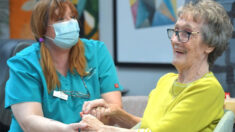
In today’s changing times, you want your child to be in the safest of hands. But global statistics are worrying. The World Health Organization reports that millions of children under the age of five regularly experience physical or mental violence. A recent UNICEF report has revealed that many children have been victims of sexual violence in childhood. So it is important to keep a close eye on your child’s caregiver and make sure he or she is providing safe and ethical care. So how can you know if your child’s caregiver is trustworthy? What are the warning signs of child abuse by a caregiver?
1. Start cautious steps before hiring
When you are thinking of hiring someone, screen them thoroughly. Always ask for ID, previous experience, and references. Talk to them to see how they treat children. Even if you hire from an agency, ask for their training and certifications. You can also get these basics from guides online.
For example, if a nursery or babysitter says they have taken CPR training, ask for a copy. Small cues are important.
2. Don’t forget to check references and past experience.
Always talk to at least two previous people who have hired them. You should ask them how the caregiver behaved with their child. Did he come on time, did he know first aid, and did he leave the children alone? Even if the position is small, references can give you the real picture. Many high-ranking guides advise that references can catch lies quickly.
3. Keep rules and expectations clear at home.
You should say in advance what your routine is. Rules for food, sleep, screen time, and discipline should be clear. This clarity creates a comfortable environment for both. Keep some written instructions for the first day or week so that there is no scope for any confusion.
4. Keep an eye, but also build trust.
Initially, give small trial shifts by staying close. You can also talk to the child through a video call. However, installing CCTV is a sensitive option. If you install a camera, first talk to the caregiver honestly and explain the reason. Transparency increases trust. Many recommendations suggest that open communication reduces misunderstandings and increases safety.
5. Physical and behavioral signs to look out for
Look out for some signs related to the behavior of the caregiver. If the child suddenly becomes quiet, scared, or unusually shy, be careful. Restlessness, changes in sleep, unexplained bruises or wounds, refusal to eat, and unusual behavior at school can all be signs. These are considered warning signs in medical and child protection guidelines.
For example, if your four-year-old child used to always hug her mother and suddenly she is isolating herself, then this could be a sign. Do not take such changes lightly.
6. Red flags to look out for immediately
If the caregiver repeatedly gives untimely apologies, is sneaky in taking the child out, gives vague or changing stories about any kind of injury, or shows inappropriate closeness to the child, then it is serious. You should take immediate action on suspicion of any kind of physical, sexual, or emotional abuse. Government and child protection resources explain the process for reporting. If you think your child’s caregiver is suspicious, a child abuse lawyer can help you understand your legal options and take proper action.”
7. How to report and get help
If you suspect anything, contact local child protection services. You can consult a school or medical provider. Reporting rules vary by state or county, but seeking professional help and reporting is a safe first step. The Mayo Clinic and other health sources say that an early response can reduce harm to a child.
8. Daily things you keep an eye on
Have daily conversations. Have small conversations with your child about what he or she did today, whether he or she got hurt or made someone uncomfortable. Let your child know that he or she can talk to you about anything. Small changes in behavior can be caught early.
9. Primary prevention measures
There are some simple steps that are within your control. You can choose a qualified and certified caregiver. Don’t forget to get documents, background checks, and references. Write down rules and routines. Have regular check-ins for open communication. If you wish, visit your child at home early and at unexpected times to observe. Basic practices like these are recommended in many expert guides.
Conclusion
Your vigilance and love can increase your child’s safety. Recruit wisely, set clear rules, keep an eye on him, and let your child know that he can share everything with you. If in doubt, seek professional help immediately. Remember that prevention is the best protection, and your small precautions can make a big difference in your child’s life.


